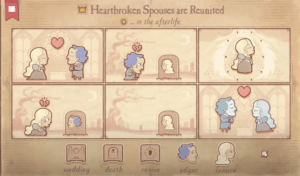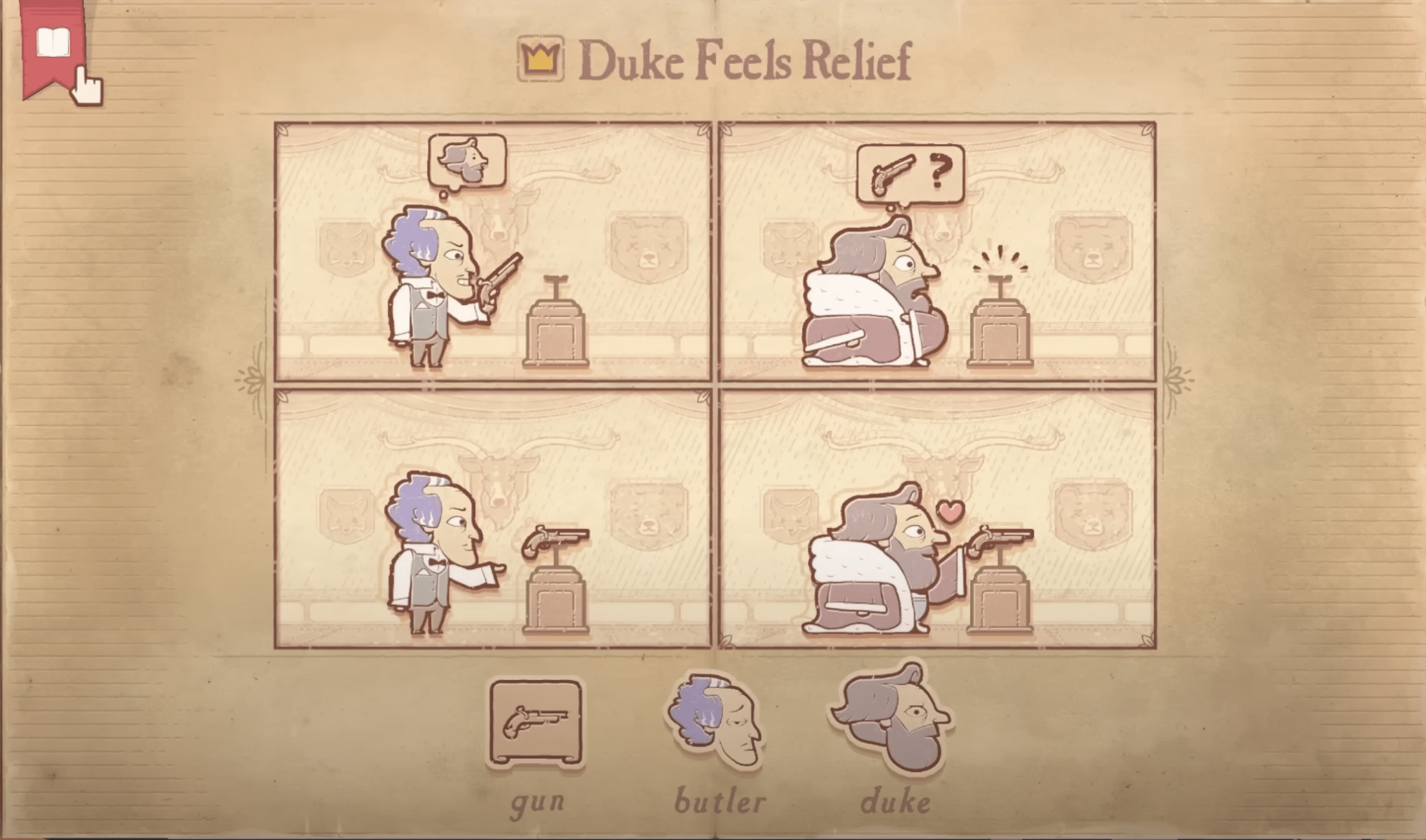
The game I chose for today’s critical play is Storyteller. It is a puzzle game that is centered around building stories that fit the given page titles. The game is authored by Daniel Benmergui, and although it is said it is suitable for all ages, I find that it is probably more appropriate for 13+ audiences due to certain aspects of the storytelling such as infidelity and violence. The game is currently playable on PC and Nintendo Switch.
Storyteller’s openness to different outcomes encourages player experimentation and boosts engagement with the puzzles and the subtle visual interaction loops act as immediate progress feedback to constantly grab players’ attention and encourage puzzle completion.
Storyteller’s design is the first thing you notice when start the game. The game is played on what seems to be a magic book that opens up to different chapters, each with numerous puzzles to solve. Each chapter is themed around a specific game narrative, with each puzzle exploring it in a different way. As you click on the first puzzle, the book flips to the correct page, and you are greeted with what looks like comic book panels, as well as characters, scenes, and more that you can drag and drop onto the panels. As you play the game further, you begin to notice that there are a lot of different ways you can solve the puzzles. On top of that, the game encourages you to pursue the most simple ways to solve the puzzles. Suggestions such as creating the puzzle without using “death” or using one fewer story panel smoothly create an in-puzzle concept of levels as players can choose to take on the more challenging approach.
Other mechanics like drag and drop also facilitate easy experimentation, and, combined with he visual interaction and feedback, create rapid feedback loops for players. If a player places a character in the wrong panel or situation, the character’s expression turns to that of confusion, immediately telling the them that something must change, without going through an extensive process of figuring out what went wrong, or, even worse, only realizing the issue at the end and having to restart. The game does this especially well as its design isn’t open to interpretation. In this way it draws a clear line between art and design, as each design decision tells the user something that is unambiguous. I believe this is a big factor that differentiates it from other similar games. There are no text-based hints, which tend to get annoying much faster than this, and also reinforce the idea that the player needed help to solve the puzzle and didn’t actually “do it themselves”. This way of feedback is much faster, more efficient, and also more encouraging.
In addition, the game tiers difficulty in a manner that is not too overwhelming for players. Earlier levels are not too easy, or too hard, and act as a tutorial of sorts to get players acclimated to the mechanics of the game. However, as the game progresses, and players get better, the puzzles become harder, with more characters, more scenarios, and more complexity of the one-sentence prompts that players are supposed to create puzzles around.




